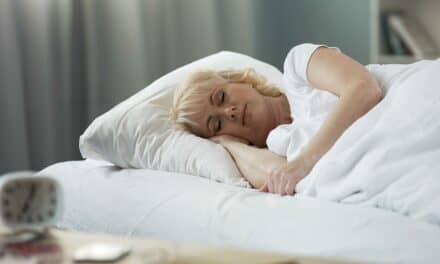The American Academy of Sleep Medicine takes a big step in keeping out of center sleep standards relevant and up-to-date for today’s sleep labs and patients.
In its short time as a medical discipline, sleep medicine has seen several sea changes. Perhaps one of the biggest is the migration from testing patients for obstructive sleep apnea (OSA) in the lab to their homes.
In fact, where it was once a controversial idea, home sleep testing has become widely accepted by patients, referring physicians, sleep medicine physicians, and payors.
But home sleep testing, or out of center sleep testing, for all of its acceptance, can present a host of issues for sleep physicians, from the handling of the equipment to the accuracy of the data to the security of patient information.
Revised Standards for Today
To address this, the American Academy of Sleep Medicine (AASM) recently updated its Out of Center Sleep Testing (OCST) in Adult Patients accreditation standards. One of the key areas that the revised standards addressed is issues surrounding the sharing of patient data. “As more data sharing is moving to the cloud, it is more important to address how it should be saved and shared. We wanted to have it be tighter,” explains Samuel A. Fleishman, MD, president of the AASM. “We wanted the standards to reflect the technology of today.”
For AASM President-elect M. Safwan Badr, MD, all of the standards are critically important, but, for him, one is chief among them. “The most important aspect for me is the identification of the parameters within which these tests are appropriate,” he says. “Specifically, the standards will guide us in selecting the right test, for the right patient, under the guidance of the right physician. I am particularly pleased that the OCST accreditation standards require that the designated medical director must be a sleep specialist. This is a major step forward to ensure consistent, high standards in OCST.”
Badr, who is a professor and chief of the Pulmonary Critical Care and Sleep Medicine Department of Internal Medicine at Harper University Hospital and Wayne State University School of Medicine in Detroit, adds that he has confidence in the data collected during OCST studies, because of advances in portable monitoring technology in the last few years. The revised standards will help to guarantee the data continue to be the best possible. “Strengthening the OCST accreditation standards in areas such as HIPAA compliance and equipment maintenance will ensure that facilities maintain the highest standards in every aspect of testing,” he says.
While the revised standards, which take effect on August 1, 2013, may seem to be another in sleep medicine’s ongoing sea changes related to the way it conducts its business, Fleishman, who is medical director of sleep medicine and behavioral health for Cape Fear Valley Health System in Fayetteville, NC, says that the AASM is of the “general feeling that these [revisions] are not major issues, they’re more administrative hurdles. We’re trying to keep up.”
In a letter to AASM members earlier this year, Fleishman explains further that accreditation was more important than ever “especially as the US health care system continues to move in the direction of outcomes based medicine. The AASM is unwavering in our message to insurers and other stakeholders that board certified sleep medicine physicians and the team at AASM accredited sleep centers are uniquely qualified to provide high quality, coordinated, and cost-effective diagnostic and therapeutic services for patients with a sleep illness such as OSA.”
One of the underlying themes of the new standards is clearly defining who should and who should not be tested at home. “Out of center sleep testing isn’t really appropriate for everybody,” Fleishman says. “A lot of programs don’t take into account comorbidities or have a regard for the age of the patient. It doesn’t make sense,” Fleishman says. Because of this, he adds, the patient will often have to be retested, which costs payors and the entire system money.
Approving the Testers
Going hand in glove with the new standards is a program developed by the AASM to establish a list of approved out of center sleep testing suppliers for accredited centers to potentially utilize.
The program reflects a reality of today’s rapidly changing sleep medicine landscape: outsourcing some of the functions of out of center sleep testing allows accredited sleep centers to quickly add this program. “If you have a six-bed center and now up to 40%-60% of your testing is home testing, a lot of centers can’t upscale fast enough,” explains Fleishman.
Both Fleishman and Badr stressed that the AASM program is not an accreditation program, but a designation program. It is an option for accredited centers to utilize if they so choose to assist them in developing their out of center program. The designation gives the accredited center confidence that these providers can assist the center in providing a good OCST program, Badr explains. “Many sleep centers will continue to implement their own, in-house OCST program. But some sleep centers will find it beneficial to outsource some of their OCST functions to a provider. When selecting a provider for OCST, a sleep center can have confidence in knowing that an approved OCST supplier will provide services that are consistent with OCST accreditation standards,” he says.
The Application Process
Contracting out of center sleep testing suppliers can apply for the program on the AASM website. They will have to complete an application indicating that they are in compliance with the AASM standards. The completed applications are reviewed by the AASM, and, if the application indicates compliance, a site visit will be scheduled. There is a fee for the application process.
Many of the qualifications reflect the revised AASM accreditation standards.
During the application process, the AASM will verify that the applicant has a valid business license, certificate of occupancy, and the requisite permits for providing health care services. The applicant also must be capable of providing services on a national basis and employ a medical director who is available during regular business hours and is board certified in sleep medicine by the American Board of Sleep Medicine (ABSM) or a member board of the American Board of Medical Specialties (ABMS).
In addition, the applicant must have properly trained personnel and provide 24/7 support to patients throughout the duration of the sleep test. The applicant also should have a patient training component that addresses a variety of culturally and linguistically appropriate services and have arrangements for timely provision of translation services for non-English-speaking patients.
All equipment must meet the AASM accreditation standards, and the applicant must have established equipment cleaning, infection control, and maintenance procedures.
The applicant’s published code of conduct must be consistent with the judicial opinions and medical ethics of the American Medical Association.
The applicant must demonstrate that its means for transferring data to the sleep center is HIPAA compliant. The applicant also must be able to provide data regarding the reliability of tests and the adequacy of the data on a quarterly basis.
Following the site visit, the applicant will receive either approval without reservation, or denial of approval. The approved applicant can communicate its approved status in marketing material and on its website, but may not use the term “accredited” or “endorsed.”
Once the out of center sleep testing supplier is approved, any accredited OCST program may directly contract with it. The accredited center will control the billing of the payor, unless precluded by law or regulation. “It is important to understand that the supplier is providing services for the center and not the other way around,” Fleishman says.
Badr outlined why the voluntary designation is important for accredited centers and sleep medicine in general. “The new designation of Approved OCST Suppliers is important because it ensures that national contractors provide OCST services in accordance with OCST accreditation standards when they contract with sleep centers,” he says. “The designation also is important because it keeps the board-certified sleep medicine physician at the center of patient care. When a sleep center contracts with a company that is an Approved OCST Supplier, the national contractor must provide the sleep center with the entire raw data recording obtained from the sleep test. Then the sleep specialist will review and interpret the data to make a diagnosis and develop an appropriate treatment plan for the patient.”
At the Vanguard
Since the release of the Approved Out of Center Sleep Testing Supplier program, one OCST supplier has applied for the designation. Overall, Fleishman says that there has been both enthusiastic and less-than-enthusiastic reaction to the approval program. “For some, there are painful changes. For others, it’s consistent with what they’re already doing,” he says.
One supplier who is enthusiastic for the program is Glen Burnie, Md-headquartered NovaSom. The company, which provides sleep testing and solutions for OSA, recently received notice that it was the first company to receive designation as an approved OCST supplier.
“We are proud that the Academy has recognized NovaSom’s commitment to accurate, high-quality, cost-effective in-home testing for OSA, and our consistency in providing an excellent experience for patients and sleep specialists alike. AASM’s leadership in the quality standards and adoption of out of center sleep testing by sleep specialists will improve quality and access to care for millions of Americans,” says Michael Coppola, MD, NovaSom’s chief medical officer. “Health insurers, benefit managers, employers, physicians, and patients have a new gold standard by which they can evaluate the quality of home testing.”
Coppola, who is a member of the AASM, says that he expects home sleep testing will continue to grow, and this is a positive. “We think it will improve access to care,” he says.
Making it more viable is the quality embedded in the standards, Coppola observes, particularly in terms of reimbursement.
As Badr notes, knowing that a contracting out of center sleep testing supplier has the approved designation will give accredited sleep centers a level of confidence. For the contractors, too, the designation is a benefit. “The attractiveness of the designation is that it allows us to work with accredited sleep labs to provide services,” Coppola says. “We can expand the market and benefit from more access.”
The Center of the Sleep Testing Process
While out of center sleep testing has revolutionized and streamlined testing for patients who may be suffering from OSA, according to Fleishman, one person who will remain at the center of the testing process is the sleep medicine physician.
According to Fleishman, ideally the way the testing process should begin is with a referral from a primary physician to a board-certified sleep medicine physician who is part of an AASM-accredited sleep center that also has OCST accreditation. After a consultation with the sleep physician, if there is high pretest probability for a diagnosis of OSA and there are minimal comorbid medical problems, the physician will order an out of center sleep test. The test will be administered at the patient’s home. The results, if the test is being administered by an approved out of center sleep testing supplier, will then be scored and sent to the physician for review and interpretation, or the raw data will be sent to the sleep medicine physician for scoring and interpretation. Depending on the results, the patient will then receive treatment for OSA.
“That’s the ideal,” says Fleishman. “There’s some wiggle room as it pertains to when the sleep physician sees the patient in the process, but not much.” SR
C.A. Wolski is a contributing writer for Sleep Review. Questions for the author can be sent to [email protected]





